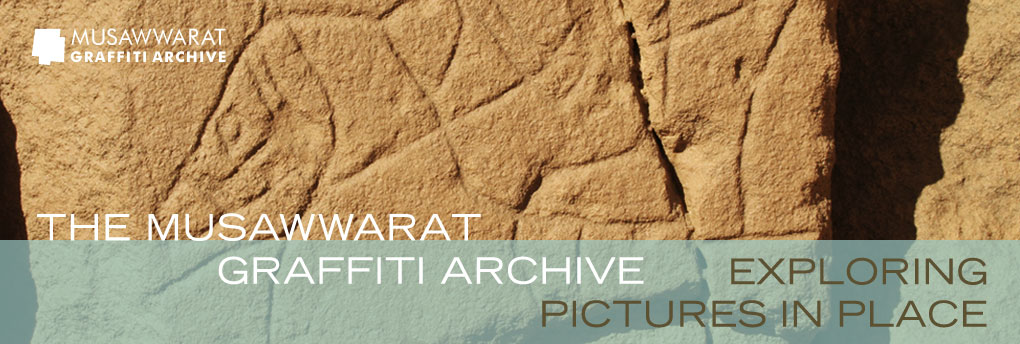Fifth Field Season (Spring 2013)
The fifth field season of the Musawwarat Graffiti Project was dedicated to systematically expanding the descriptive record on the Musawwarat graffiti as well as their photographic documentation. Documentation work focused on Complex 200, accompanying excavation work in Temple 200. The block-based documentation of the graffiti corpus followed the methodology established in previous field seasons: The location, characteristics and the state of preservation of each block was noted. Each (potentially) artificial trace on each block surface was documented in block sketches, and ‘graffiti entities’ that could be defined as such were classified, measured and described. ‘Graffiti entities’ were colour coded in the field for quick recognition during the subsequent lab-based drawing process. Superimpositions and juxtapositions of ‘graffiti entities’ were documented.
While the interior of Temple 200 is rather sparsely decorated with graffiti, its ‘windows’ show a rich record of intricate motifs, such as chase scenes. The well-preserved southern as well as the western walls of the temple are especially rich in Meroitic graffiti, including some of Musawwarat’s famous elephant depictions, a rhino hunting scene and intricate depictions of human heads. The distinction between natural (e.g. erosion) traces and features on the block surfaces from artificial traces (e.g. from the quarrying, building and re-fitting processes, or ‘marking activity’) became a major issue of discussion and investigation during this field season.
Participants: Cornelia Kleinitz, Juliette Brauer & Dina Serova
Dates: March 2013
Duration: 3 weeks
Funding: Rock Art Research Institute, University of the Witwatersrand
Text: Cornelia Kleinitz (2014)





